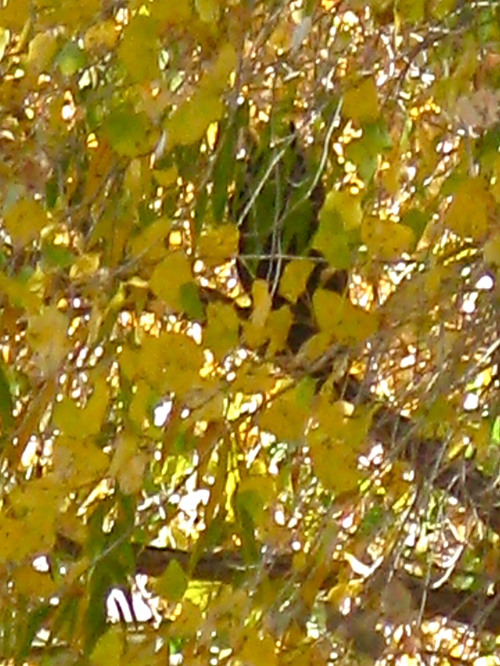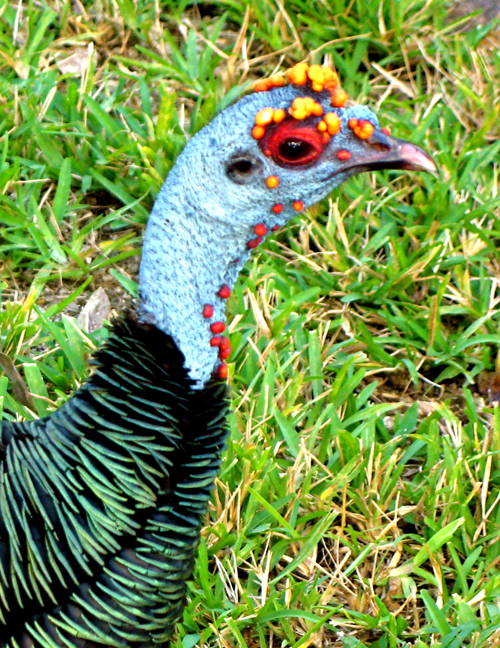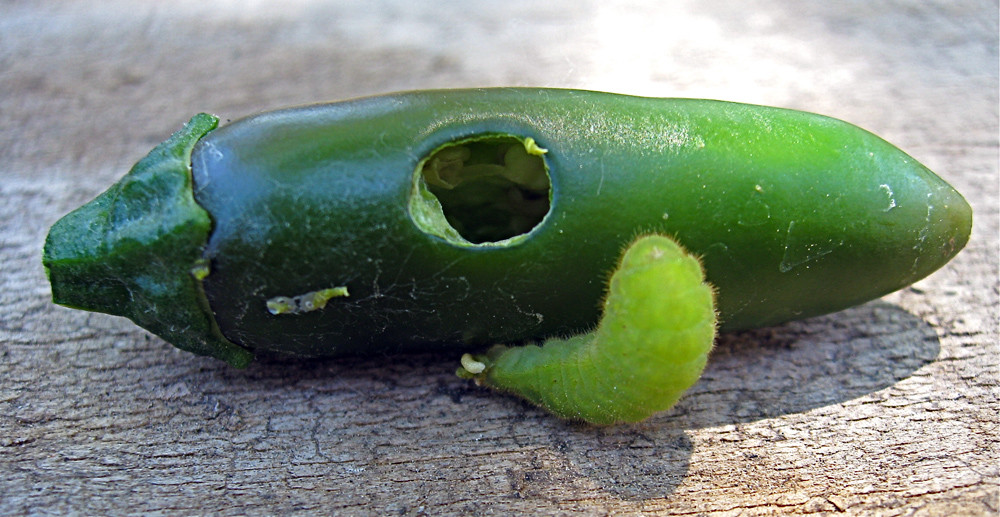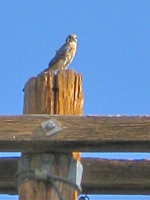It’s not uncommon for people who have moved here from wooded parts of the country to declare that they miss the seasons, especially fall and its bright colors. This can be true especially for those who live on golf courses with year-round green lawns and palm trees. But on close inspection, the natural Sonoran desert has its own distinct seasons, and its own rich color scheme. Each year E and I try to get out into wild places — or, at least wildish places — during the holidays to observe these seasonal changes.
— or, at least wildish places — during the holidays to observe these seasonal changes.
<< One of the desert’s fall colors is green: if autumn rains are plentiful, as they have been this year in the highlands east of Phoenix, the palo verdes, catclaw acacias and other trees leaf out opportunistically.
Often, at Thanksgiving, this means a trip up the Apache Trail, Highway 88, along the Salt River Canyon and its lakes. Not a trail, and not a highway, the Apache Trail is a well-maintained, and in places excitingly precarious, gravel road that leads travelers through some wonderful upland Sonoran desert east of Phoenix. This is a rich desert, populated with vast Saguaro groves, ocotillo, palo verde, crucifixion thorn, hopseed bush, jojoba, viguiera, bebbia, pink fairy duster, desert lavender, lots of Englemann’s prickly pear, the occasional Mammalaria pincushion and hedgehog cactuses, several varieties of cholla, and many other plants. (All photos A.Shock unless noted; CLICK to Enlarge)
In the fall and winter the fruits of the slender-stemmed Christmas cholla (Cylindropuntia lepticaulis) ripen red >>
This year our trip up the Apache Trail began with a false start, as we failed to check road conditions before leaving home and were surprised to find that much of the road is closed due to summer monsoon washouts. It’s a long drive, but by approaching from the east, driving downstream from Roosevelt Dam, we were able to get to the Burnt Corral campground, which is excellent for picnicking, fiddling about like a pipit on the lakeshore, or hiking up into the surrounding desert which was what suited our anti-consumer madness mood.
The Desert broom (Baccharis sarothroides) bloomed earlier in the year and now the female shrubs are flocked like Christmas trees with  fluffy, airy radiolarian-like seeds, which are so abundant this year that the pebbly crevices on the floor of the wash we were exploring are clogged with small drifts of them. Sparrows and chipmunks will feast on this bounty, and the Cooper’s hawks, shrikes, and kestrels will, in turn, have lots to feed upon. >>
fluffy, airy radiolarian-like seeds, which are so abundant this year that the pebbly crevices on the floor of the wash we were exploring are clogged with small drifts of them. Sparrows and chipmunks will feast on this bounty, and the Cooper’s hawks, shrikes, and kestrels will, in turn, have lots to feed upon. >>
Like odd pod-like ornaments the seed-bearing organs  of the female Crucifixion Thorn (Canotia holacantha), are still ripening and red; later they will droop over and hang, woody brown, until they burst open and release their seeds to the ground. (Photo E.Shock) <<
of the female Crucifixion Thorn (Canotia holacantha), are still ripening and red; later they will droop over and hang, woody brown, until they burst open and release their seeds to the ground. (Photo E.Shock) <<
In spring, Ocotillos are topped with fiery flare-like sprays of blossoms at the very tips of their stems, but in some autumns, the multiple stems of these drought-deciduous plants are lined with dying leaves along their entire lengths, changing  from green to yellow to red to brown. To the right, the outbound leaves of an Ocotillo (Fouqueria splendens) are easy to see against the deep blue sky, and the green skin of two youngish Saguaros using it as a “nurse-plant”. >>
from green to yellow to red to brown. To the right, the outbound leaves of an Ocotillo (Fouqueria splendens) are easy to see against the deep blue sky, and the green skin of two youngish Saguaros using it as a “nurse-plant”. >>
When the sun backlights ocotillo leaves, they glow like dense lightstrings along the spiny stems. In the  background, against the lake, a still yellow-leafed ocotillo can be seen (left). <<
background, against the lake, a still yellow-leafed ocotillo can be seen (left). <<
And to draw all the colorful descriptions above of red-ornamented, flocked, light-stemmed desert plants into a Christmas tree simile, here’s a star for the top — a Loggerhead shrike (Lanius ludovicianus)  perched atop an already bare Ocotillo, an excellent perch from which to hunt for prey on the desert floor. (Photo E.Shock) >>
perched atop an already bare Ocotillo, an excellent perch from which to hunt for prey on the desert floor. (Photo E.Shock) >>
< < Or, if you have a bigger top decoration in mind, here’s a distant Red-tailed hawk, warming itself on a saguaro in the late sunlight, its image captured at the extreme end of my little scope and digital camera’s range.
< Or, if you have a bigger top decoration in mind, here’s a distant Red-tailed hawk, warming itself on a saguaro in the late sunlight, its image captured at the extreme end of my little scope and digital camera’s range.
And under the tree, as a present? I almost forgot: a quick daylight glimpse of a gray fox, too quick to photo, but with a glorious bushy tail flowing in its wake.
 >> A durable little male Costa’s hummingbird, perched two feet off the ground on an aloe-tip, in the gray light of a below-freezing desert dawn, the first morning of the year also the coldest of the season so far. (All photos A.Shock — click to enlarge!)
>> A durable little male Costa’s hummingbird, perched two feet off the ground on an aloe-tip, in the gray light of a below-freezing desert dawn, the first morning of the year also the coldest of the season so far. (All photos A.Shock — click to enlarge!) Above: slurping at the feeder:
Above: slurping at the feeder:






















